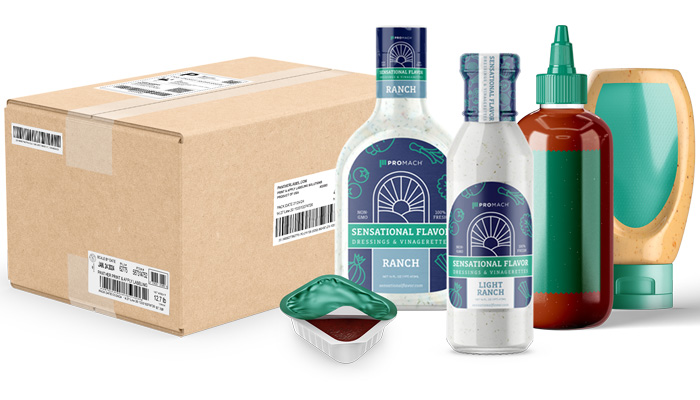
Pasta sauce. Gravy. Salad dressing. Marinades, and many, many more. Shelf-stable sauces are pantry heroes, both at home and in professional kitchens. But have you ever wondered how something so perishable makes it from the kettle to your cabinet without losing its flavor, texture, or safety?
It all has to do with smart processing and smart packaging. And today’s liquid food producers are getting seriously creative to meet rising consumer expectations (and some tough regulations).
Why Shelf-Stable Sauces Are More Essential Than Ever
Today’s consumers are busy, ingredient-savvy, and global. They want foods that are convenient, flavorful, and safe—without having to babysit expiration dates or crowd their fridge. Shelf-stable sauces deliver all that: easy storage, less food waste, and authentic taste you’d swear was homemade.
For manufacturers, shelf-stable products mean broader reach (think exports and e-commerce), less cold-chain stress, and better margins. The only catch is that it’s not as simple as sealing the lid and calling it a day.
How Processing and Packaging Define Shelf-Stable Sauce Success
How a sauce is made directly impacts how it needs to be packaged—and vice versa. Things like pH level, thickness, fat content, and even the size of particulates shape both the processing method and the container choice.
Most shelf-stable sauces follow one of three paths:
- Thermal processing (hot-fill or retort)
- Aseptic processing (sterilizing sauce and package separately)
- Acidification (lowering pH to fend off bacterial growth)
Each method brings unique technical demands:
- Retort processing, for example, heats sauces to temperatures typically between 240°F and 260°F (116–121°C) under pressure, sterilizing both the product and container simultaneously to ensure food safety.
- Aseptic systems sterilize the sauce and the packaging independently—often using hydrogen peroxide vapor on the package—before filling inside a sterile environment.
- Acidified sauces are carefully adjusted to maintain a final pH of 4.6 or lower, the critical threshold that inhibits the growth of Clostridium botulinum, ensuring shelf safety without relying on high-heat sterilization.
Using Glass Jars and Metal Cans in Sauce Packaging
Glass and cans are still go-to options, especially for traditional pasta sauces. They handle heat well and block out oxygen like champs. But glass jars are heavy, can break, and are more resource-intensive to make.
Why Flexible Pouches Are Dominating Sauce Packaging Trends
Lightweight, resealable, and eco-friendlier, pouches are exploding in popularity, especially for globally inspired sauces and direct-to-consumer brands. When paired with aseptic or retort processing, they offer serious shelf life without the bulk.
Many flexible pouches today also incorporate oxygen barrier layers, such as EVOH (ethylene vinyl alcohol) or nylon, to dramatically slow down oxidation, helping preserve vibrant flavors and color even over extended storage periods.
Benefits of Rigid Plastic Packaging for Dressings and Marinades
PET bottles and HDPE containers offer a nice balance for dressings, dips, and marinades. Thanks to barrier layers and coatings, they help maintain freshness while making it easy to pour or squeeze out every last drop.
Processing Techniques That Preserve Flavor in Shelf-Stable Sauces
If we’re being honest, people often assume “shelf-stable” equals “tastes like the cardboard it came in.” But with today’s processing tech, that doesn’t have to be the case.
Tools like:
- Vacuum processing (to cut down air exposure during cooking)
- Flash pasteurization (a quick heat-cool cycle that kills microbes without killing flavor)
- Aseptic packaging (where the sauce and package are sterilized separately)
…are helping producers lock in the bright basil, the bold cumin, the rich creamy notes—without needing a refrigerator.
How ProMach Supports Smart Sauce Processing and Packaging Solutions
From fine-tuning formulations to installing aseptic systems and retort automation, ProMach works with liquid food producers to make shelf stable foods. ProMach brands like Statco-DSI and Allpax help customers keep their sauces tasting just as good on day 200 as they did on day one.
Because shelf-stable doesn’t mean settling—it means smart collaboration.
Future Trends in Shelf-Stable Sauce Packaging and Processing
Shelf life is just the beginning. Today’s sauce lovers are also craving:
- More adventurous global flavors
- Cleaner labels (easy-to-pronounce ingredients, less sodium and sugar)
- Smarter, greener packaging
Are you working on a shelf-stable sauce project? What packaging formats are working best for your brand? Drop a comment below, we’d love to hear your take.

